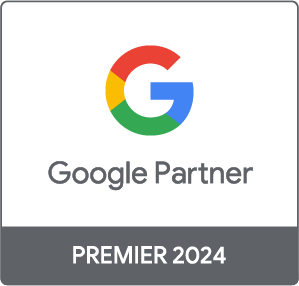Bid strategies - a complete guide

Are you tired of getting lost in acronyms and want to optimise your next campaign with the ultimate bid strategy? This guide will take you through the most popular and impactful strategies available.
Like any decision in PPC, the most effective management choices are often the most well-researched. With budgets being stretched, it’s more important than ever to ensure the placement of your ads is useful to your campaign. Otherwise, you run the risk of your ads being shown to uninterested audiences, or wasting campaign budgets on ineffective interaction.
Place yourself on the road to success and read on to learn all you need to know. After reading this handy guide, you’ll be ready to choose the right strategy for you in no time:
What are PPC bid strategies
Simply put, PPC bid strategies refer to your chosen methods for achieving your PPC goals across search engines and social media platforms. They cover every possible goal, whether you’re looking to bring in a new audience demographic, increase your online visibility as a brand, or maximise your ROAS for a specific campaign, there’s always a PPC bid strategy designed to help you succeed.
These strategies have a lot of control over how, where and when your ads are shown, and who they are shown to. So it is vital that you choose your strategy intentionally, with your campaign goals in mind. Your budget should be spent wisely and the decision behind your preferred bid strategy significantly influences your ROI. The best way to make the right choice is through a thorough understanding of what each strategy can help with and where their limitations might be impactful.
Some of your campaigns might be best suited to being seen by as many users as possible. While other campaigns may benefit from a highly streamlined placement in front of a very specific audience. Some campaigns are designed with impressions in mind, others are solely focused on conversions or other goals. The important thing to remember is to always match your goal up with whatever bid strategy you choose for your campaign.
Success is in the details, especially when it comes to PPC.
Primary bid strategies
Here are the main bid strategies available today, along with some examples of the types of businesses that may benefit. Feel free to get creative and see how each strategy could be implemented into your campaigns.
Target ROAS
This strategy stands for Target Return On Ad Spend, and does what it says on the tin. An automated strategy, it will automatically make bid adjustments based on the goal return figure from your ad spend.
Using machine learning, Google takes each search from a user and predicts what products being advertised will have the highest conversion value from that specific customer. It looks at the products available and selects ones that have a high likelihood of being purchased by the customer, then bids highly on those products.
In short, Google’s algorithm shows what it feels is the most likely item to be bought by that user, based on their search term and the historical data on that product.
It’s highly popular in the ecommerce space, but don’t get carried away. Set realistic ROAS goals and build out from there. If you’re too ambitious in your goal, you’ll end up with wasted budget.
Target CPA
When you set a Target Cost Per Acquisition goal, you are working with another automated strategy. Target CPA aims to drive conversions at a high level, to a set average cost per transaction.
It’s not a case of trying to sell items individually at the target price, but rather hitting your target CPA overall. So some items will be expensive, others will be more moderately priced. The average from your sales is where you want to check that the bid strategy is aligning with your targets.
Software as a Service (SaaS) companies can benefit from this strategy as it closely aligns with a deeper understanding of the value of acquiring a new customer.
Performance Max
Performance Max strategies are also automated, but with a key difference: you set the campaign target within the Pmax campaign.
Choosing either a conversion goal, or a conversion value goal, you then select an optional desired target CPA or ROAS for the ultimate in automated strategy bidding. You then choose location, language and the ad schedule and duration.
After setting some assets like your website URL, logos, videos and ad copy examples, Google automates the creation of potentially thousands of unique ads for your campaign that will show across Google’s Search and Display platforms, along with their other apps like YouTube, Gmail and Maps.
Businesses like travel agencies can benefit from a Performance Max campaign as it offers the chance to showcase multiple elements of a business (e.g. flights, hotels and car rentals) in a single ad across many different platforms
Target Impression Share
There are three available options for this strategy, based on your desired goal. Choose from the following, depending on where you want to see your ads:
- Top of the page
- Near the top of the page
- Anywhere on the results page
While it’s not guaranteed, Google will take your budget, goal and campaign and aim to place you in the desired spot as often as possible. Optimise your quality scores across your ad groups and individual ads for the best results.
Brand campaigns will benefit from this strategy, as it’s a speedy way to get a lot of fresh eyes on your ads, increasing brand awareness. Any business looking to establish their name in their niche may use this strategy to build brand recognition.
Maximise Clicks
This is another automated strategy that works with your budget to bring in the highest number of clicks possible. It’s a great driver of traffic and high volume interaction with your campaign, but does not take the quality or relevance of this traffic into consideration.
Content creators and companies looking to drive traffic to their sites for ad revenue, lead generation or affiliate marketing could benefit from this strategy, which places clicks specifically at the forefront.
Maximise Conversions
This is perhaps the most obvious bid strategy for someone new to PPC, as it aims to bring in the highest number of conversions. Don’t let its simplicity fool you though, this is a highly intelligent strategy for the right campaign goal.
You set a daily budget, and Google automates your bids, placing the focus on search queries that have historically brought in the most conversions for your company.
Businesses selling online courses may benefit from this strategy, where the key goal is to get users to make a purchase. The same strategy can be applied to many online shops, especially those selling products in competitive industries.
Maximise Conversion Value
Here is a relatively new strategy that automates your bidding in a similar style of Target RoAS. You’ll need historical data from your campaign to get started, as this will form the basis of the data that Google learns from and guides its automated bidding across your campaign. It’s a slow burn, taking several weeks or even months before hitting the sweet spot and bringing in the results you’ve set as your goal.
Luxury retailers and ecommerce brands selling expensive products can benefit from this strategy. The focus here is on keeping the costs down for each conversion, in relation to the cost of the product being sold. This way, you can focus on generating high-value sales, rather than the volume of sales alone.
Manual CPC
Here’s a classic, old-school bidding strategy that gives you complete control when bidding. You manually choose the campaign budget, all the way down to the keyword level bids. It’s more time consuming, but still a firm favourite for many PPC managers due to its high level of control. If you know what you’re doing, you can save a lot of money through strategising with manual CPC in mind.
Local businesses offering services like landscaping or plumbing may find this strategy useful. By setting bids manually, you keep total control over every penny spent. This helps you get a good sense of your business, audience and services, and what is resonating the most with users online.
Bid strategy tips
Now that you’ve got a taste for the basics, here are some tips to help you on your way.
Ad relevance is king
As many of these strategies are automated, they rely on historical data, budget and relevancy. You have direct control over these elements, but it’s important to focus on the relevancy of your ads, as this can save your budget, which in turn helps your historical data over time. It’s cyclical, so your efforts are rewarded time and again.
Be mindful when budgeting
Especially when using automated strategies. You want to find a balance between an affordable budget that won’t break the bank, and a high enough budget that gives these automated strategies a chance to spread their wings.
Monitor everything
This one goes without saying, but keep a close eye on your data. Accurately record every relevant metric as you go, creating regular reports and interactive dashboards. This is also great for analysis and optimisation.
Use bid modifiers
Make use of your bid modifiers to instantly use your budget more effectively. Every use is different, and elements like location, time of day and device all have very different metrics for each campaign. So get granular and allow your campaigns to be specific to each user.
Know your audience
Really, really, really well. This is perhaps the most vital information that any campaign will ever benefit from. If you know your customer, you know what they respond to. And, more importantly, what turns them away.
In Summary
Bid management is the heart of any campaign, so by developing your understanding of the various strategies you can use, you improve your chance of success. If you choose a bid strategy with your goals in mind and manage your strategy intentionally, you’ll be well set up to reach your campaign goals.
Take your time to familiarise yourself with these strategies, then optimise your campaigns through careful monitoring, analysis and useful modifiers.








